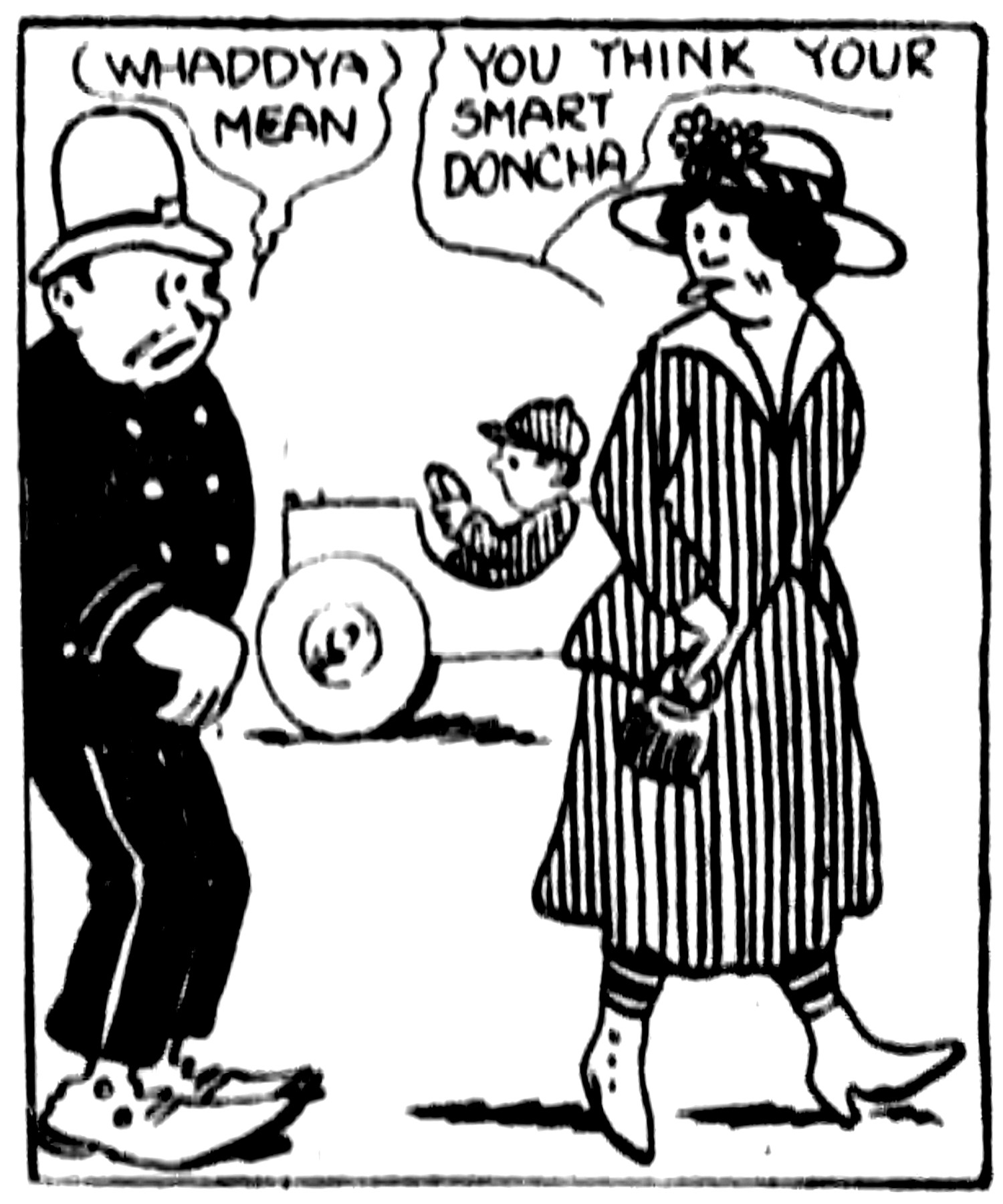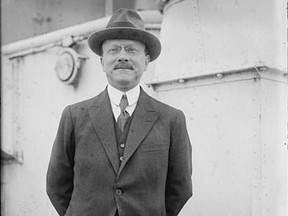Cincinnati Surrendered To The Automobile When Jaywalking Was Outlawed

IMAGE EXTRACTED FROM MICROFILM BY GREG HAND
How many Cincinnatians subscribed to Popular Mechanics magazine in 1912? And how many of those subscribers recognized, in the September issue, a tiny article on Page 414 that laid out the future of the Queen City? It all seemed so innocent:
“The city pedestrian who cares not for traffic regulations at street corners, but strays all over the street, crossing in the middle of the block, or attempting to save time by choosing a diagonal route across a street intersection instead of adhering to the regular crossing, is designated as a ‘jay walker’ in Kansas City. Kansas City recently adopted a new ordinance for the control of foot traffic as well as vehicles, and ‘jay walking’ is to be prevented as rigidly as ‘jay driving.’”
That squib appeared adjacent to another brief item on how the brand-new town of Speedway, Indiana allowed only motorized vehicles on its streets, banning anything pulled by horses. In combination, the two articles sounded the death knell for a way of life that had existed for millennia.
Look at the illustrations that grace the old books about Cincinnati. There is no such thing as jaywalking. The streets were owned and enjoyed by the people. Pedestrians share the road with wheeled vehicles, crossing wherever convenient, even stopping in the middle of the street to chat. Horse-drawn carriages and wagons hauled passengers and freight. Men pulling handcarts and pushing wheelbarrows dodge the throng. The only motorized vehicles were the electric street cars, and they were confined to their tracks.
During election season, Cincinnati’s streets filled with torchlit political parades. On at least one occasion, a parade filled Vine Street from Fourth Street to McMicken with chanting men waving flaming brands, lighting the clouds above with a rosy glow. When any dignitary showed up in town, they were expected to speechify from their hotel balcony and people thronged the street below, halting traffic as they cheered. People crossing the street from any direction weren’t “jay walking.” They were just “walking.” The automobile changed all that.

FROM “ILLUSTRATED GUIDE TO CINCINNATI AND THE WORLD’S COLUMBIAN EXPOSITION”, BY DANIEL J. KENNY, 1893 EDITION
DIGITIZED BY THE PUBLIC LIBRARY OF CINCINNATI & HAMILTON COUNTY
Horse-drawn vehicles and electric streetcars killed a fair number of people, but the motor car quickly notched more than a hundred fatalities and many more injuries every year. Local media often blamed the victims. The Cincinnati Post [8 January 1916] piled on:
“Fourth-st. is the mecca of Cincinnati’s jay walkers. Most of the jay-walking is done between Vine and Race-sts. The other day we counted 20 persons crossing the street at different points at one time – and none was using a cross-walk. Fortunately accidents are rare on this street because of the extreme care exercised by autoists.”
It appears not to have occurred to the writer that this behavior, just five years previous, would have been considered normal.
The hammer landed in 1917. Cincinnati joined the ranks of other auto-infested cities that criminalized jaywalking. The new law went into effect in May of that year, restricting automobiles to no more than 8 miles per hour in the business district and 15 miles per hour in residential districts. For the first time, pedestrians were restricted to sidewalks and crosswalks. Pedestrians – literally – fought the new law. According to the Post [23 May 1917]:
“Theodore Mitchell, 38, agent, 631 Maple-av, is the first person to be arrested on a charge of jay-walking since the new traffic ordinance went into effect. Traffic Patrolman [Edward] Schraffenberger charged Mitchell attempting to make a short cut at Fifth and Walnut streets. When reminded of his mistake, Mitchell became angry, Schraffenberger said. Mitchell, charged with disorderly conduct and violating the traffic ordinance, was cited to appear in court Thursday.”
If you’d asked the cops, however, they would unanimously aver that the chief violators were women. The Post [21 May 1917] quoted Police Lieutenant Charles Wolsefer:
“The women are awful. They just don’t pay any attention at all. Just take a look at them crossing on Race-st.”
The reporter did so, and counted 48 jaywalkers, of whom 37 were women. A few days later, another Post reporter followed another policeman on patrol who confronted 25 jaywalkers, of which only two were men.
Among the first arrested was Miss Ella Bright of 538 Howell Avenue, Clifton, a teacher at Woodward High School. Miss Bright did not care for the attitude of the city policeman who accosted her. According to the Cincinnati Enquirer [7 June 1917]:
“She declared she had been upbraided unduly by an officer because she crossed the street in a manner which was a violation of the traffic laws after alighting from a street car.”

IMAGE EXTRACTED FROM MICROFILM BY GREG HAND
In August of that year, Mrs. John Mongan, 4217 Glenway Avenue, Price Hill, was arrested for striking a police officer who grabbed her arm as she executed a “Dutch Cut” (diagonal jaywalking) across the intersection at Sixth & Race.
Former U.S. President William Howard Taft, then on the law faculty at Yale, was visiting his hometown that year and blithely jogged across Sixth Street near Main, only to be corralled by Officer Joseph Schindler, who gave the law professor a little legal lesson.
The Post even enlisted its “boy reporter,” 12-year-old Freddy Printz, to test the city’s ability to enforce the new jaywalking regulations. On 7 July 1917, Freddy reported his fruitless attempts to get bawled out by a police officer. Despite blatantly jaywalking at five different locations, he only earned a polite reprimand from one officer.
While the local constabulary was doing their best to enforce the new laws, the automobiles were merciless. On 21 May 1918, the Post reported on the 25th traffic fatality of the year. The victim, a 12-year-old girl, was the twelfth child killed by an automobile that year.
Curiously, although Cincinnati outlawed jaywalking, the city had omitted one very important detail that might have contributed to compliance with the new law. A letter signed only “Chicagoan” appeared in the Post on 13 June 1917. The writer suggested that, like other cities attempting to get pedestrians to cross at intersections, Cincinnati should assist pedestrians by painting white lines on the street to mark approved pedestrian crossing paths. Cincinnati’s mandatory crosswalks were unmarked!



